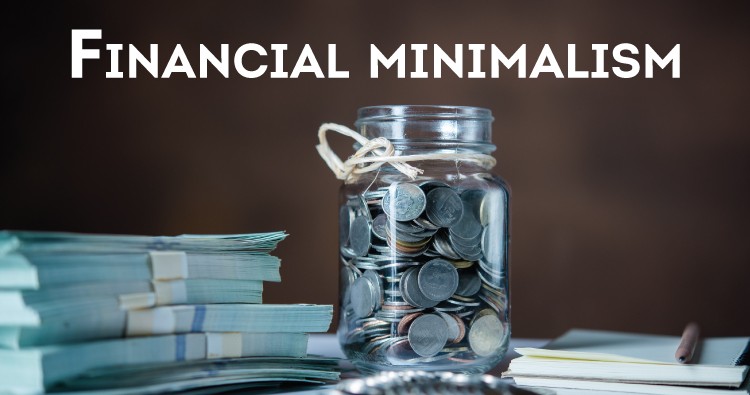In an age ruled by consumerism. Minimalism is the smart idea. Minimalism actually changes the game—starting with your lifestyle and your finances. Are you looking for the secret to financial freedom with minimalism? In this guide, we will give you an insight into how simplifying your life can make a really life changing difference and pave way to huge financial benefits and long term stability.
What is Minimalism?
Minimalism is the practice of living by eliminating excess. This is about intentional living, owning less and enjoying the simplicity. Minimalism isn’t just about getting rid of clutter; it’s about recalibrating everything from consumption to finances.
Financial Freedom: How Minimalism Leads
Mindful decision-making by its very essence is the easiest bridge between minimalism and financial freedom. By embracing minimalism, you:
Cut Unnecessary Expenses:
How you spend less on non essential items is by prioritizing the needs over the wants.
Save More Money:
As spending decreases, naturally so do savings.
Avoid Debt:
Living within your means, minimalism helps you not get into excessive credit card debt and unnecessary loans.
Focus on Quality Over Quantity:
Reducing the number of items you buy in the long run will be cheaper over time because investing in fewer high quality items will allow you to save on your replacements costs.
Find Contentment in Simplicity:
When you’re happy with less you will not go and splurge on which usually pass in a flash.
Steps to Achieve Financial Freedom with Minimalism
1. Declutter Your Finances
Take stock of your financial situation with the start of your minimalism. Look at what you spend money on, what you owe money for and what you have saved. Be able to cut back on certain things. So if, for example, you have unused subscriptions, cancel them, or if you have been on the same bills for years but now can negotiate new ones, that will help.
2. Create a Minimalist Budget
A minimalist budget seeks to spend the least possible on what is necessary and to save and invest the leftover. Here’s how to create one:
- Write down how much you spend on everything month long.
- Put them in categories – essentials (like rent, utilities, groceries) and non essentials (like eating out or shopping).
- Limit your nonessential categories so that you can spend within budgets.
3. Follow the “One In, One Out” Rule
Letting go one thing for every thing you bring in. This rule keeps you balanced enough so you don’t make impulsive purchases to save you money in the long run.
4. Adopt a Capsule Wardrobe
A capsule wardrobe is essentially a group of nonrestrictive clothing that can be mixed and matched to either create a look or make up a second outfit. When you pare down your outfit, you spend less on clothing and have more hours and energy to spare.
5. Mindful Spending
Before making a purchase, ask yourself:
- Do I need this?
- Will it add value to my life?
- How much will I miss without jeopardizing my financial goals?
By doing this you won’t spend unnecessarily and your money will be in line with your priorities.
6. Downsize Your Living Space
Cutting costs in a smaller home isn’t difficult. This all means you have more money saved toward your financial goals because lower rent or mortgage payments, reduced utility costs, and less maintenance.
7. Discard Possessions and Focus Yourself on Experiences
Minimalism is about the love and experiences and not things. Rather than spending money on the newest gadgets, invest in experiences that will leave a memory:
Source:
Buy experiences rather than the newest gadgets Switching your mindset can save you money and enrich your life.
Financial Benefits of Minimalism
1. Increased Savings
Savings and investment with less money will increase when you cut some unnecessary expenses. What emerges gradually is income growth and pace that helps create and maintain wealth and financial stability.
2. Reduced Stress
Often financial stress arises from overspending and debt. Living within your means and reducing your worry of financial problems is a great way to go and is one of the benefits of minimalism.
3. Greater Financial Security
That means you’ve got fewer expenses to worry about, and more savings to fall back on in emergencies or slimmer, less surprising scenarios. Financial safety act as a minimalist.
4. Faster Debt Repayment
Minimalism is the source of money that can be redirected towards paying off debt. The faster you eliminate debt, the quicker you’ll achieve financial freedom.
Misconceptions about Minimalism
In this post, I look at some of the common misconceptions regarding Minimalism.
1. Minimalism is About Deprivation.
That doesn’t mean you need to totally give up what you like. It’s not about making intentional choices but rather about making choices to match your values or goals.
2. It’s Only for the Wealthy
Income level doesn’t matter if anyone can embrace minimalism. What’s more, it’s a sensible way for those who are already trying to save and spend less.
3. Minimalism is a One-Time Fix
Minimalism is not a one time project, it is a lifestyle. Maintaining its benefits means a continuing commitment and mindfulness.
Tips for Staying Committed & Stay Minimalist
- You have to regularly check up on your financial goals and work in the direction of them.
- Practice the practice of gratitude for all that you already have.
- Hang out with people who understand and Practice simplicity.
- Enjoy going big victories like clearing a debt or hitting a savings goal.
Final Thoughts (Conclusion)
Minimizing the things we have means we live more simply, and do more with what is really good. Cutting down on expenses and spending money creates abundance and stability to the life. Financially speaking, minimalism is more than just a trendy catchphrase or way to live — it’s a powerful weapon in shaping your money future.
It’s time to start your journey, today and discover the secret to financial freedom the minimalist way!




Pingback: Minimalism and Saving Money: Hacks for Small Apartment Living -
Pingback: How to Create a Minimalist Home Office -
Can you be more specific about the content of your article? After reading it, I still have some doubts. Hope you can help me.